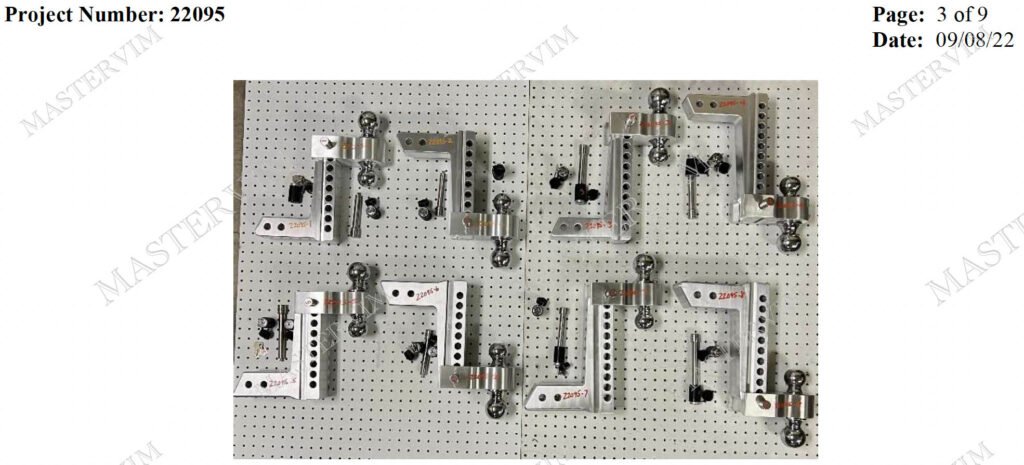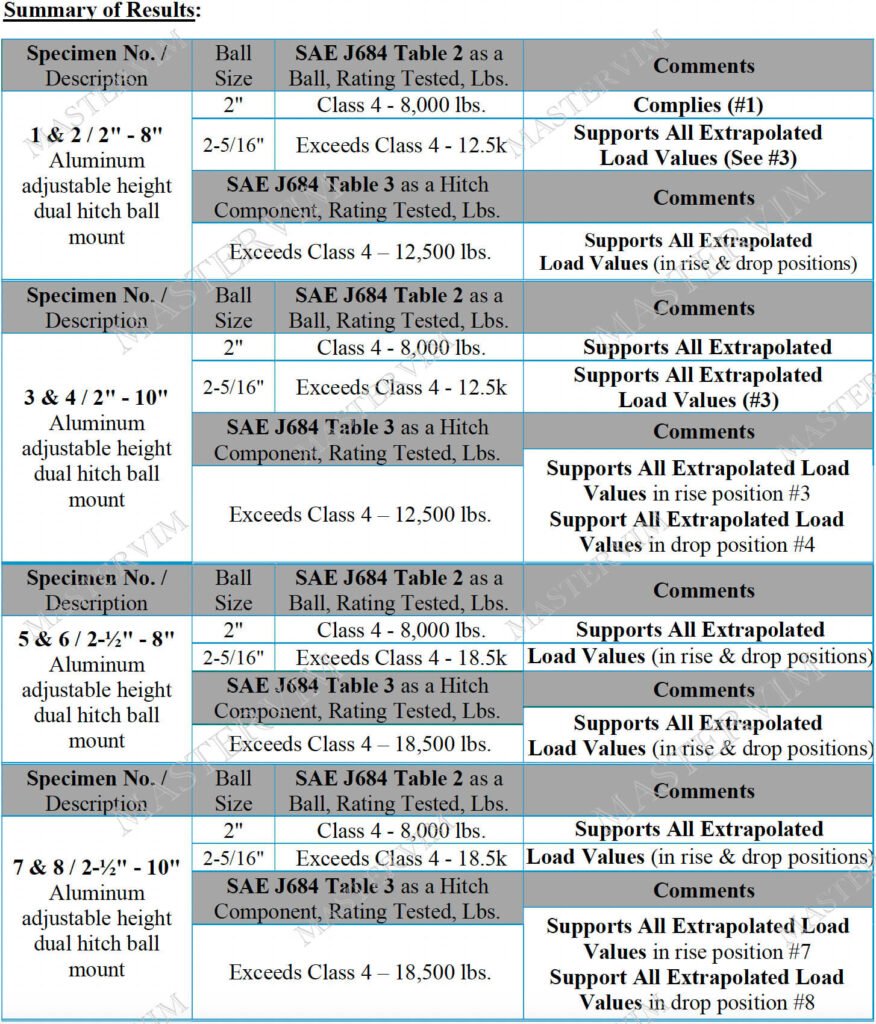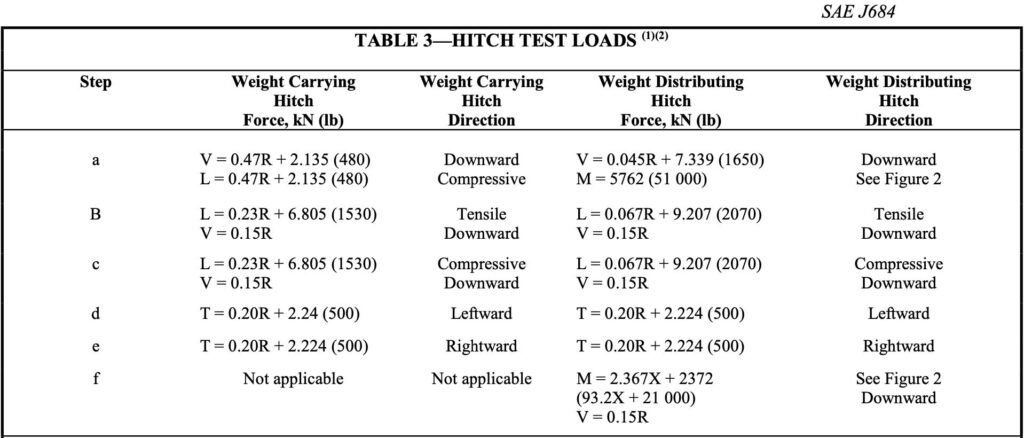Mastervim developed Aluminum Hitch Receiver Balls Assembly for top grade market that used for luxury car trailers.
| Item | Aluminum trailer hitch receiver |
|---|---|
| Size | 2-5/16", 2'' |
| Load | 12,000 lbs., 8,000 lbs, 18,500lbs |
| Surface | Black, Original, Red |
| Warranty | 3 years |
| Manufacturer | Mastervim |




Longitudinal Tension: Gross trailer Weight, N (lb) x 3

V = Vertical Force (N [lb])
L = Longitudinal Force (N [lb])
T = Transverse Force (N [lb])
M = Spring Bar Moment (N · m [in-lb]) (Leveling Force Couple)
R = Hitch Rating in terms of trailer GVWR (N [lb]) (Gross Vehicle Weight Rating) X = Hitch Rating for Maximum Vertical Load on Hitch (N [lb]) (Tongue Weight)
Packing list
Trailer Drop Hitch Ball Mount
Drop 4″, receiver 2″, 12,000lb, 7.5kgs, 100pcs/ pallet, 1.6cbm
Individual Carton Size: 320x315x160mm
Drop 6″, receiver 2.5″, 18,500lb, 11.4kgs, 70pcs/pallet, 1.6cbm
Individual Carton Size: 360x310x160mm
Shackle
Receiver 2″, 10,500lb, 2.5kgs, 300pcs/pallet, 1cbm
Receiver 2.5″, 13,000lb, 3.5kgs, 300pcs/palllet, 1cbm
Color optional, MOQ 100pcs.
Load capacity experienced on tensile testing machines.
Warranty 3 years, not including surface painting.
Hitch test loads:
3 times weight-carrying hitch, maximum trailer GVWR to be drawn.
1.3 times vertical tongue weight to be imposed on the ball.
We will contact you within 1 working day, please pay attention to the email with the suffix “@mastervim.com”.